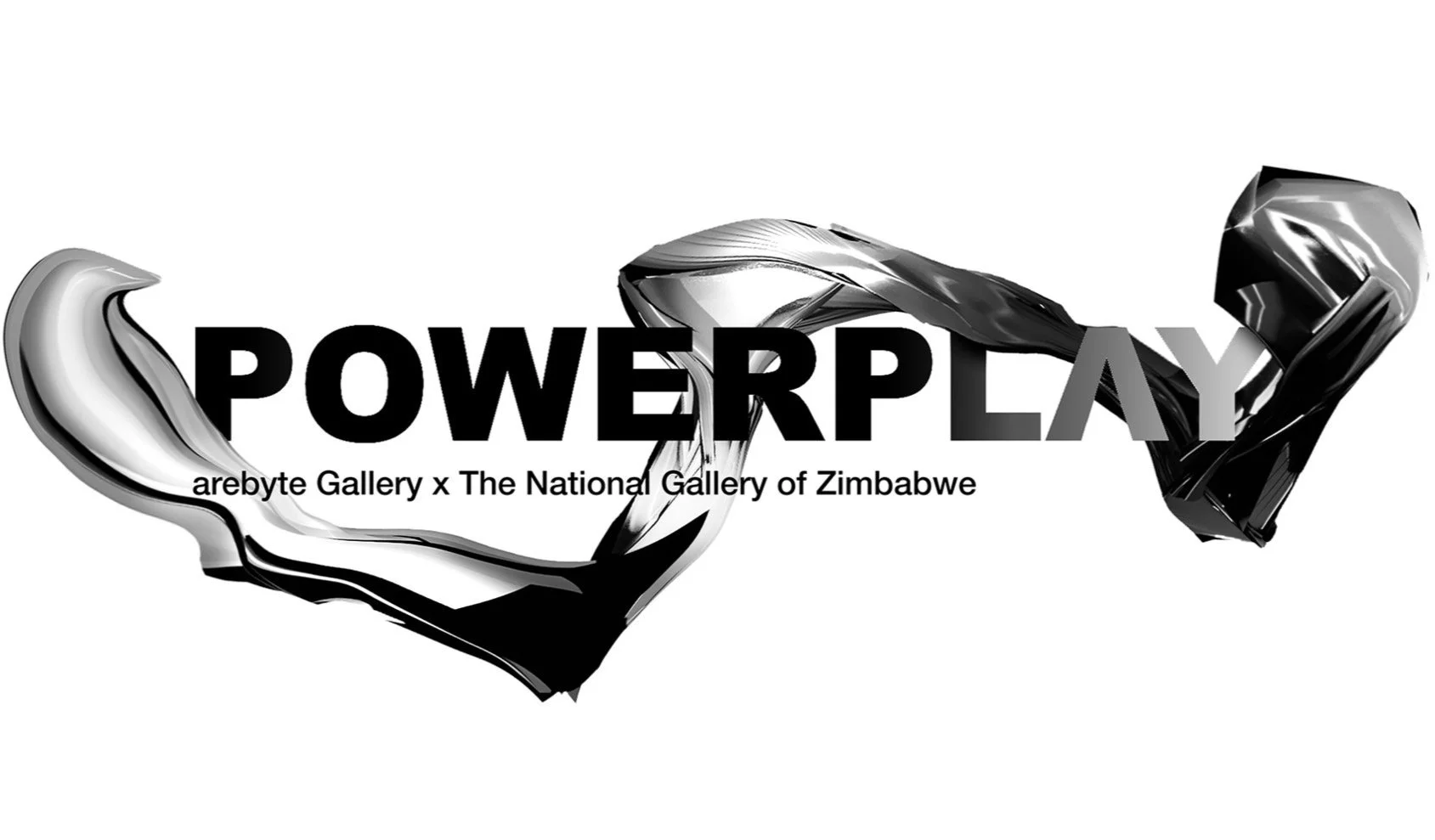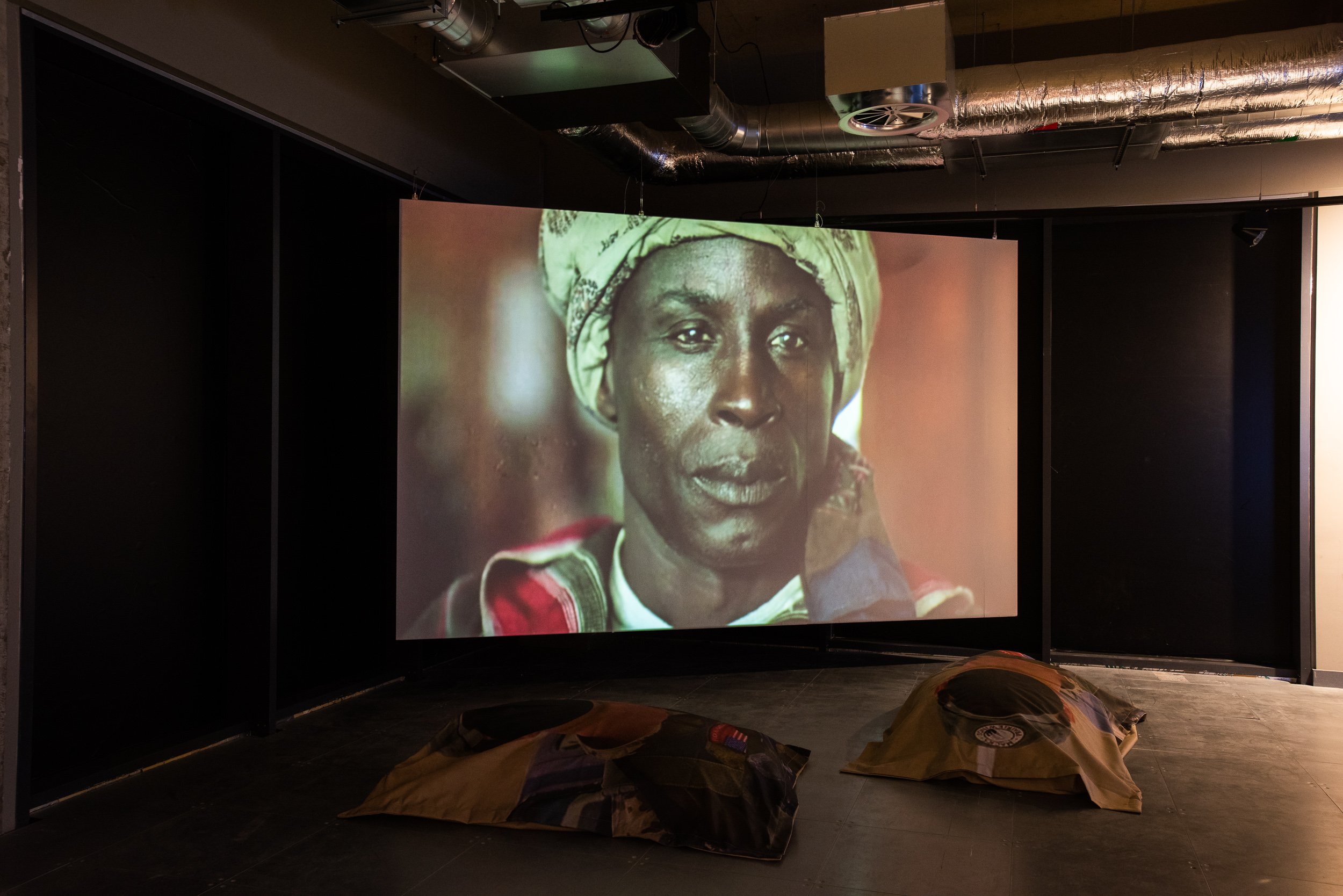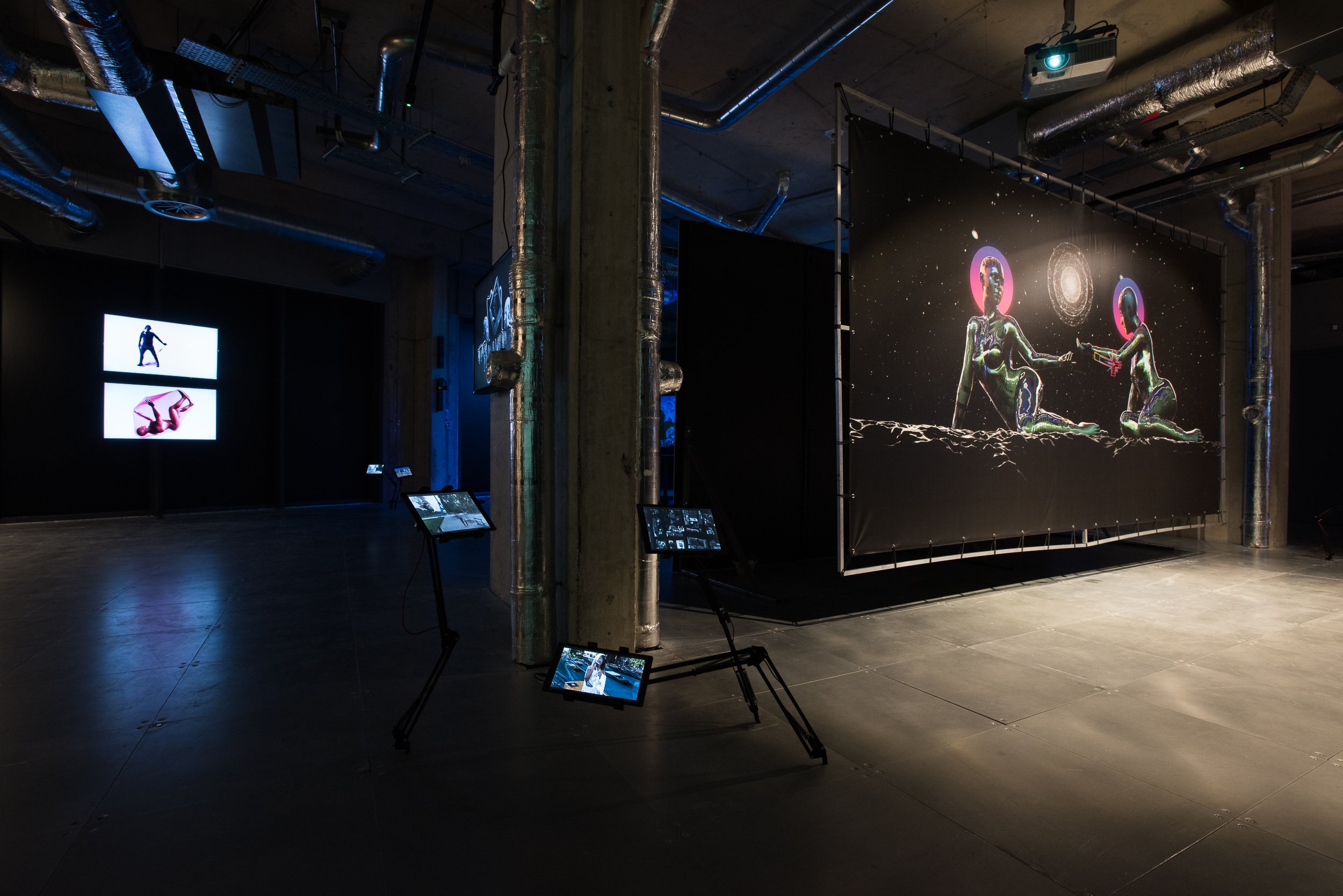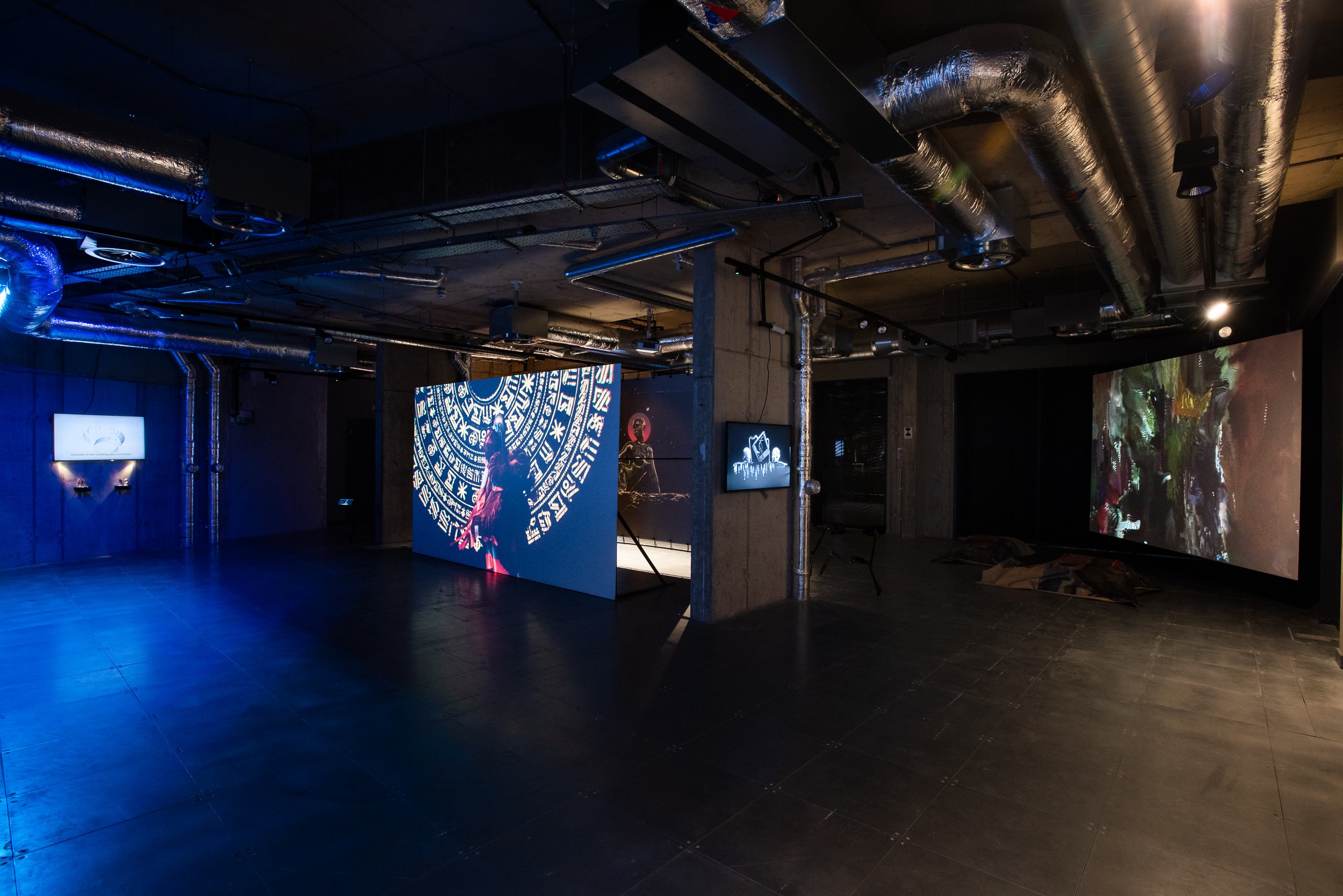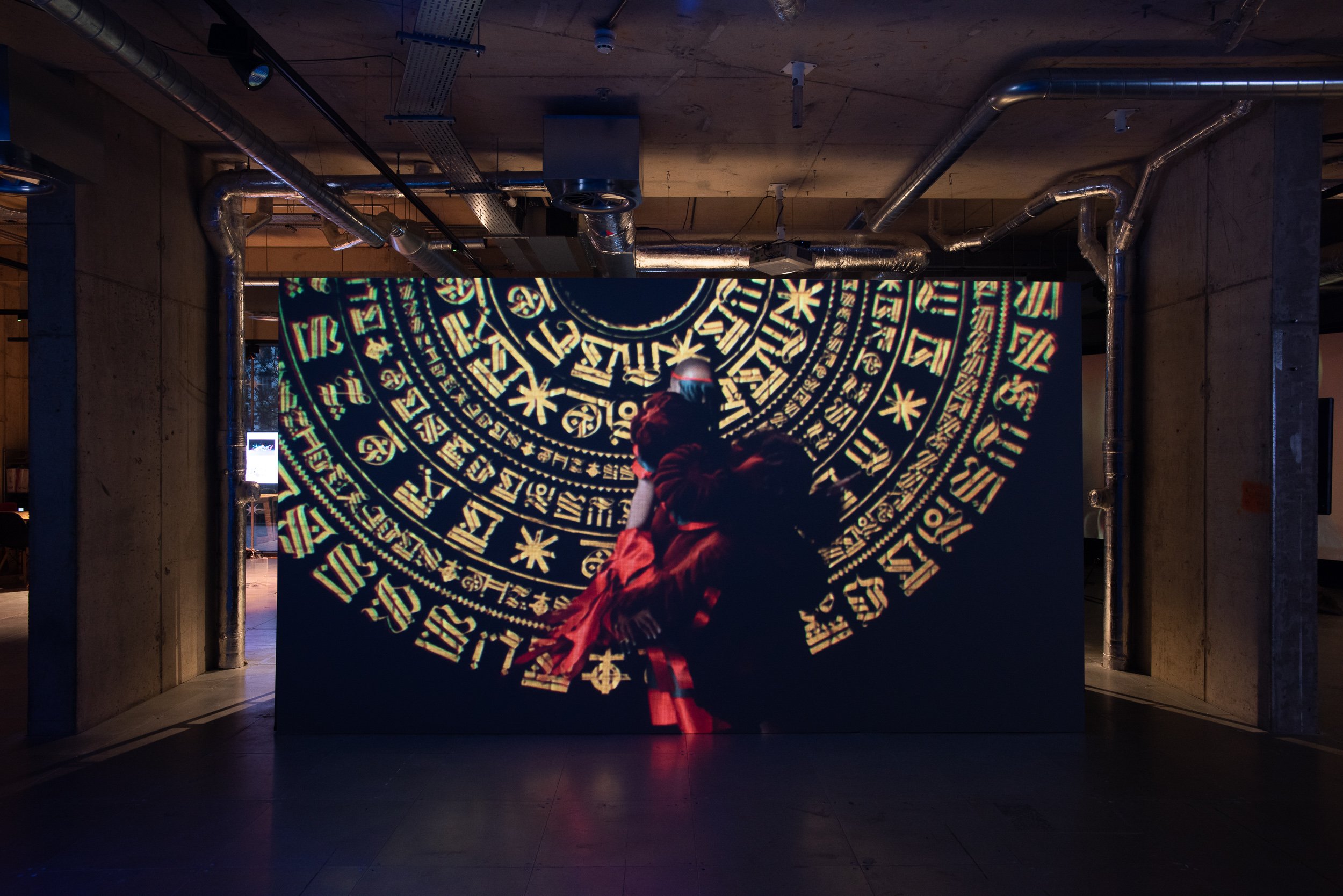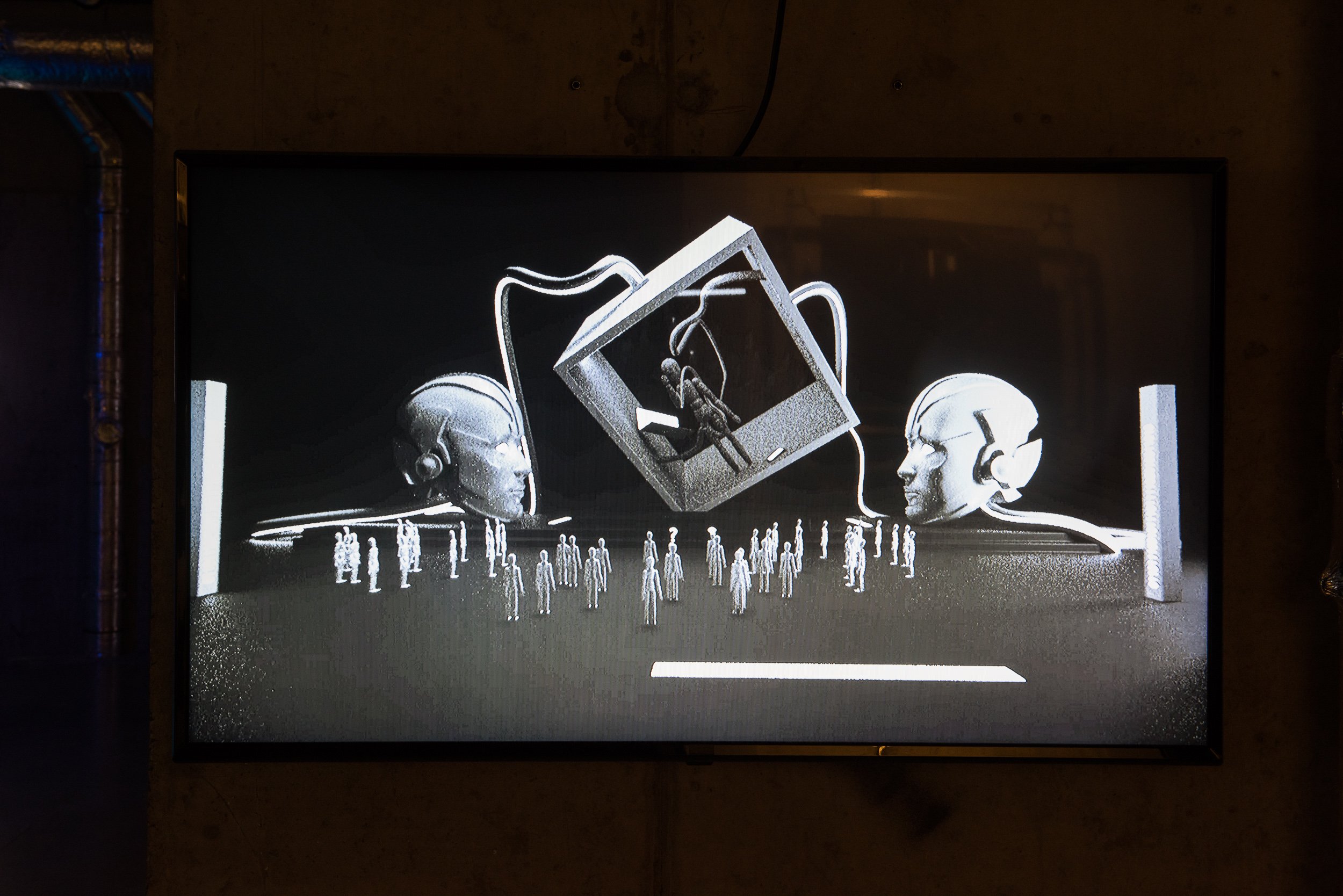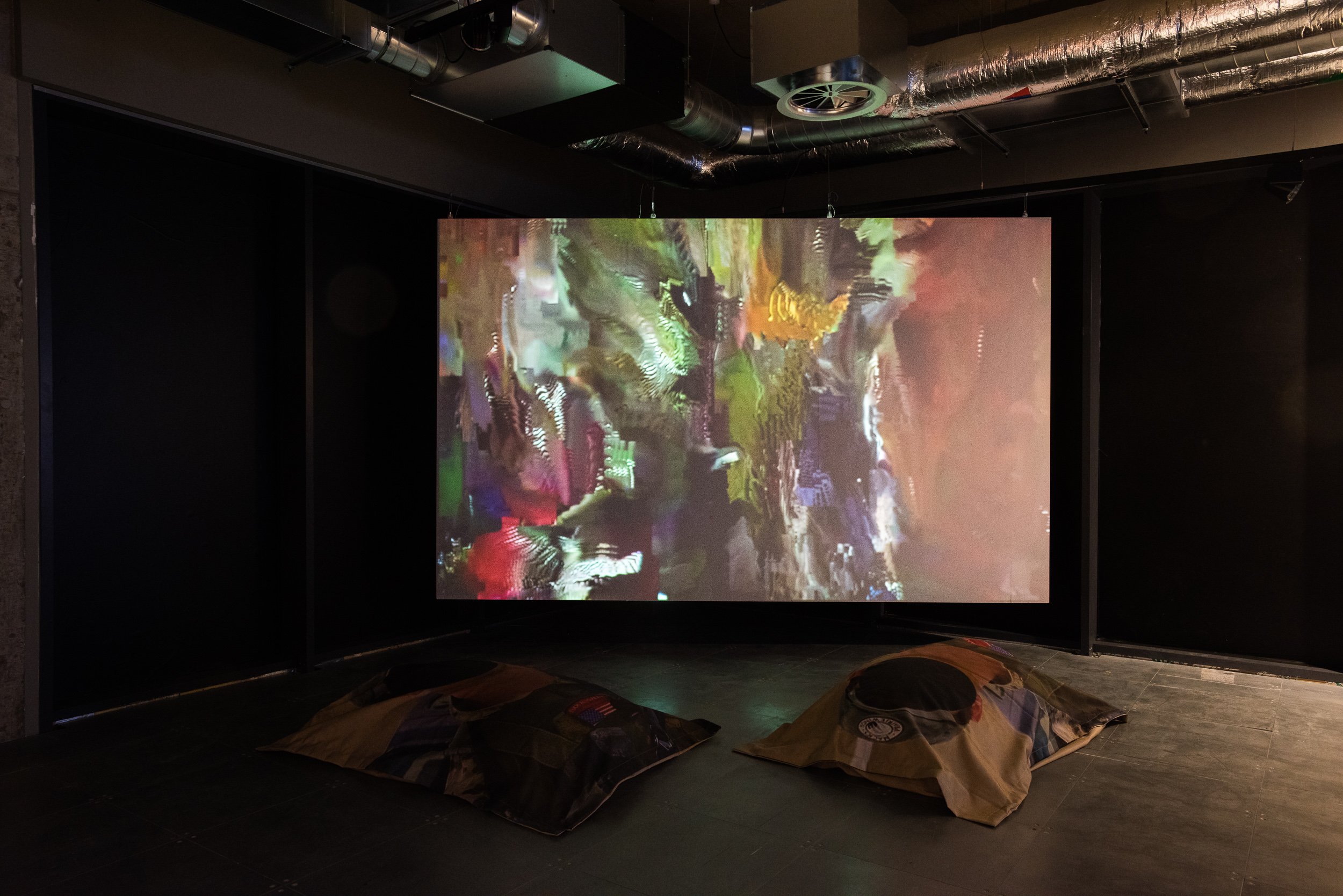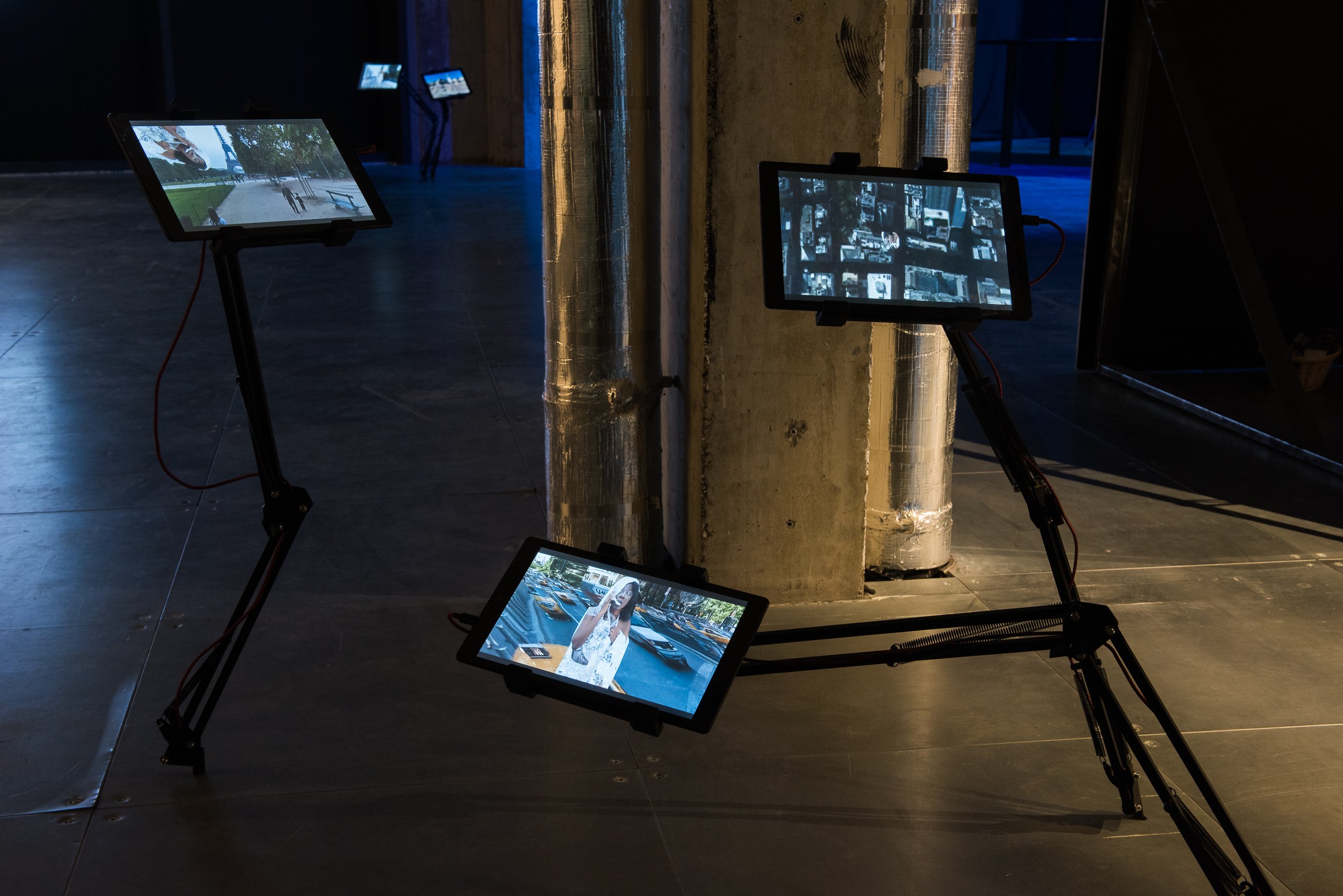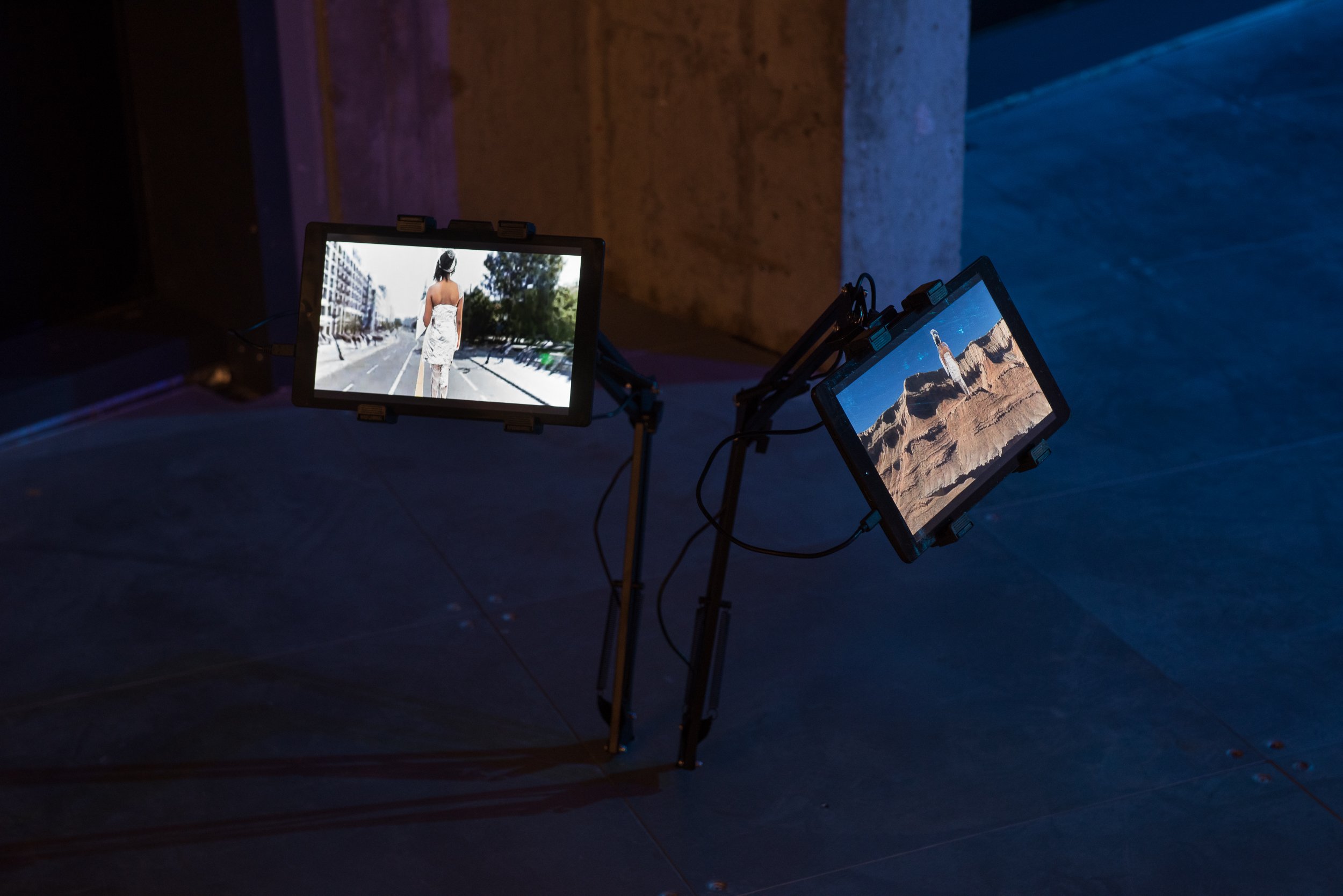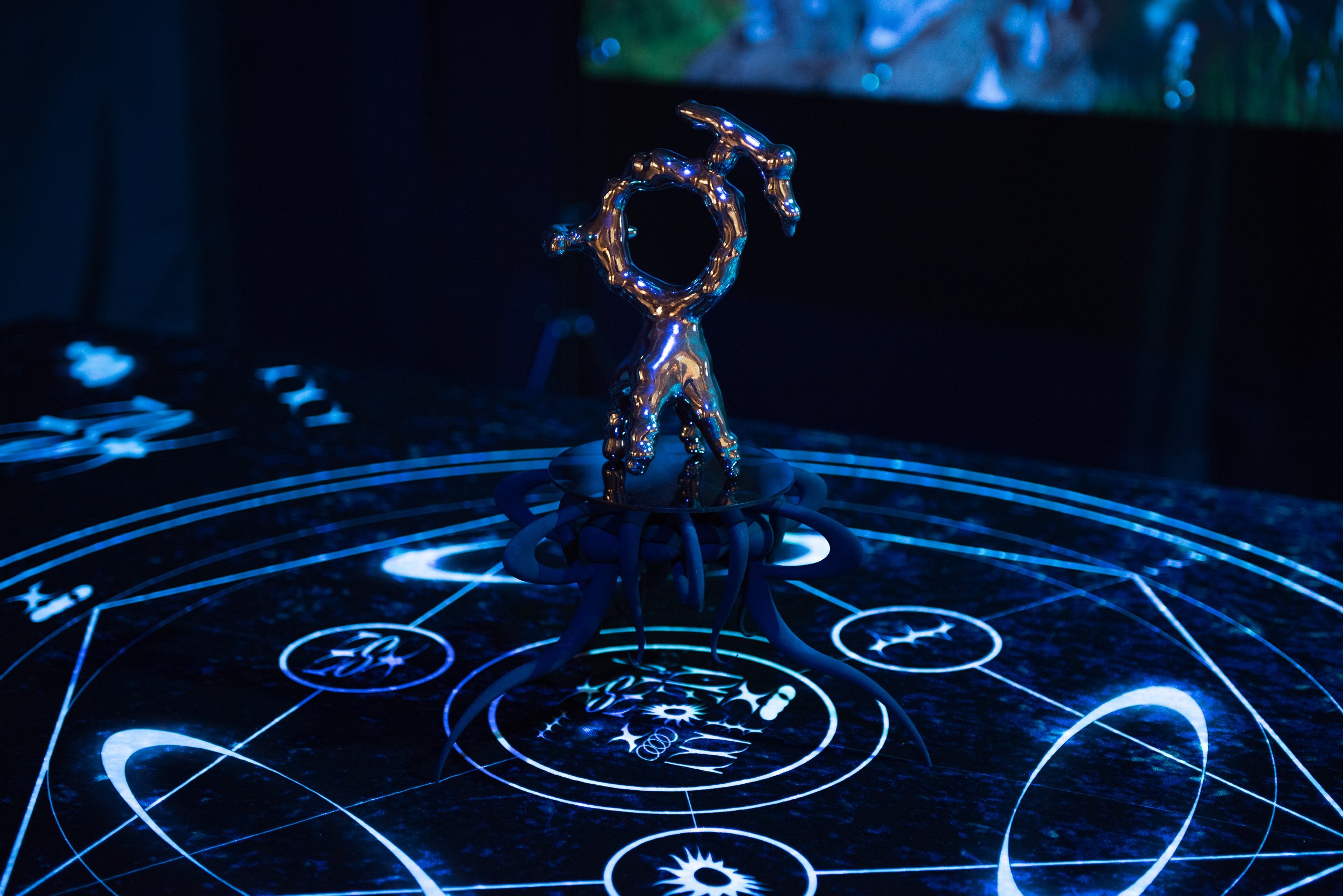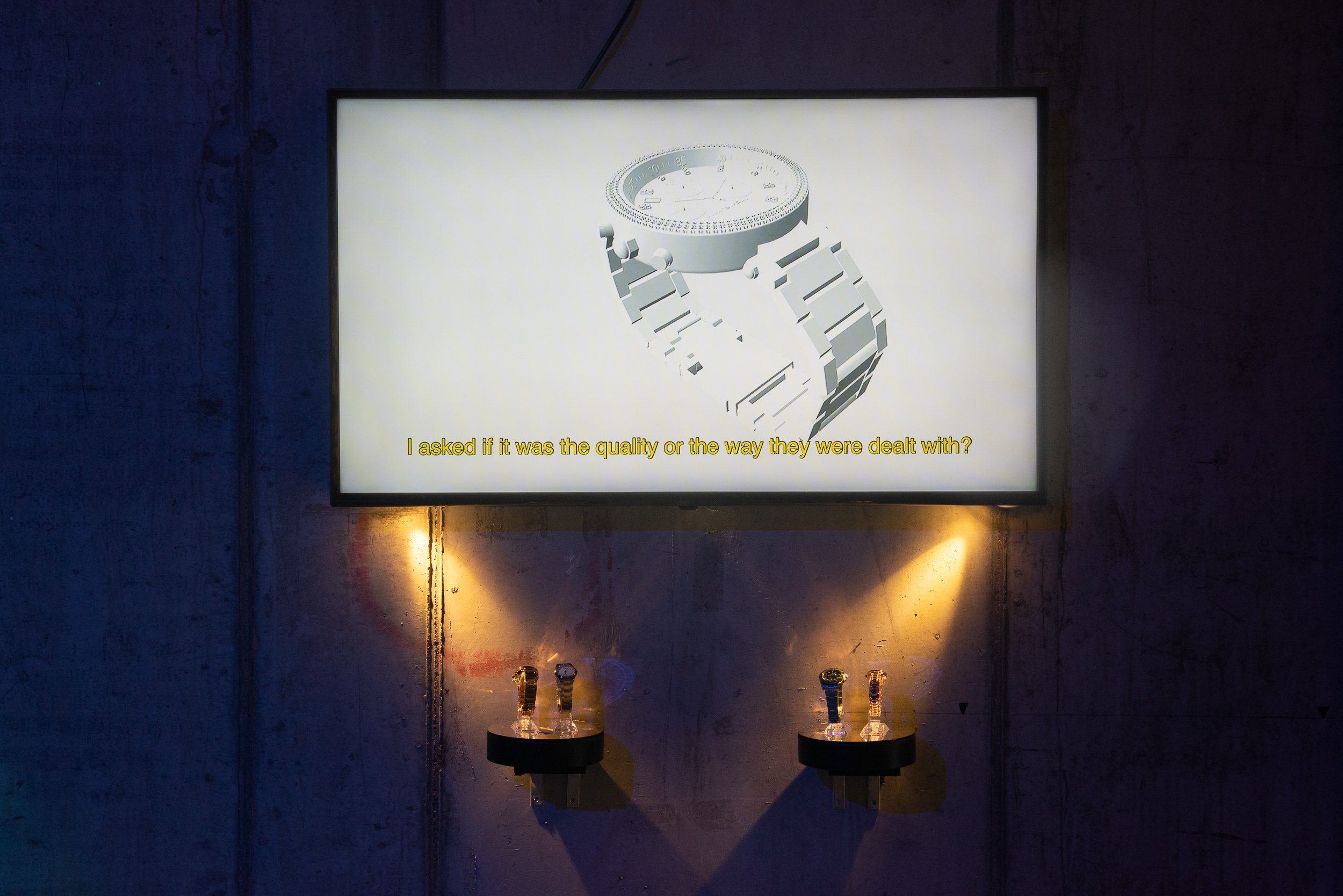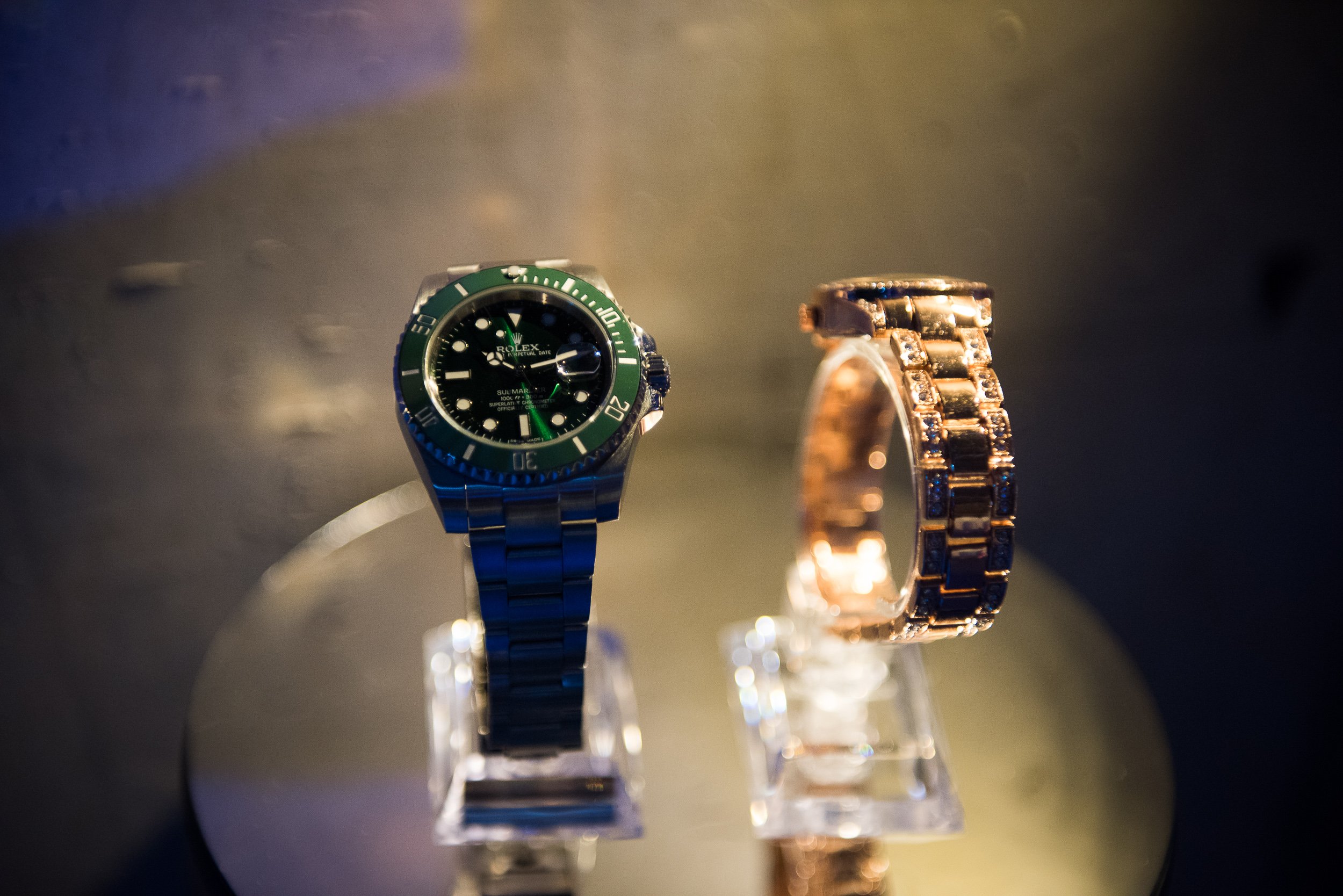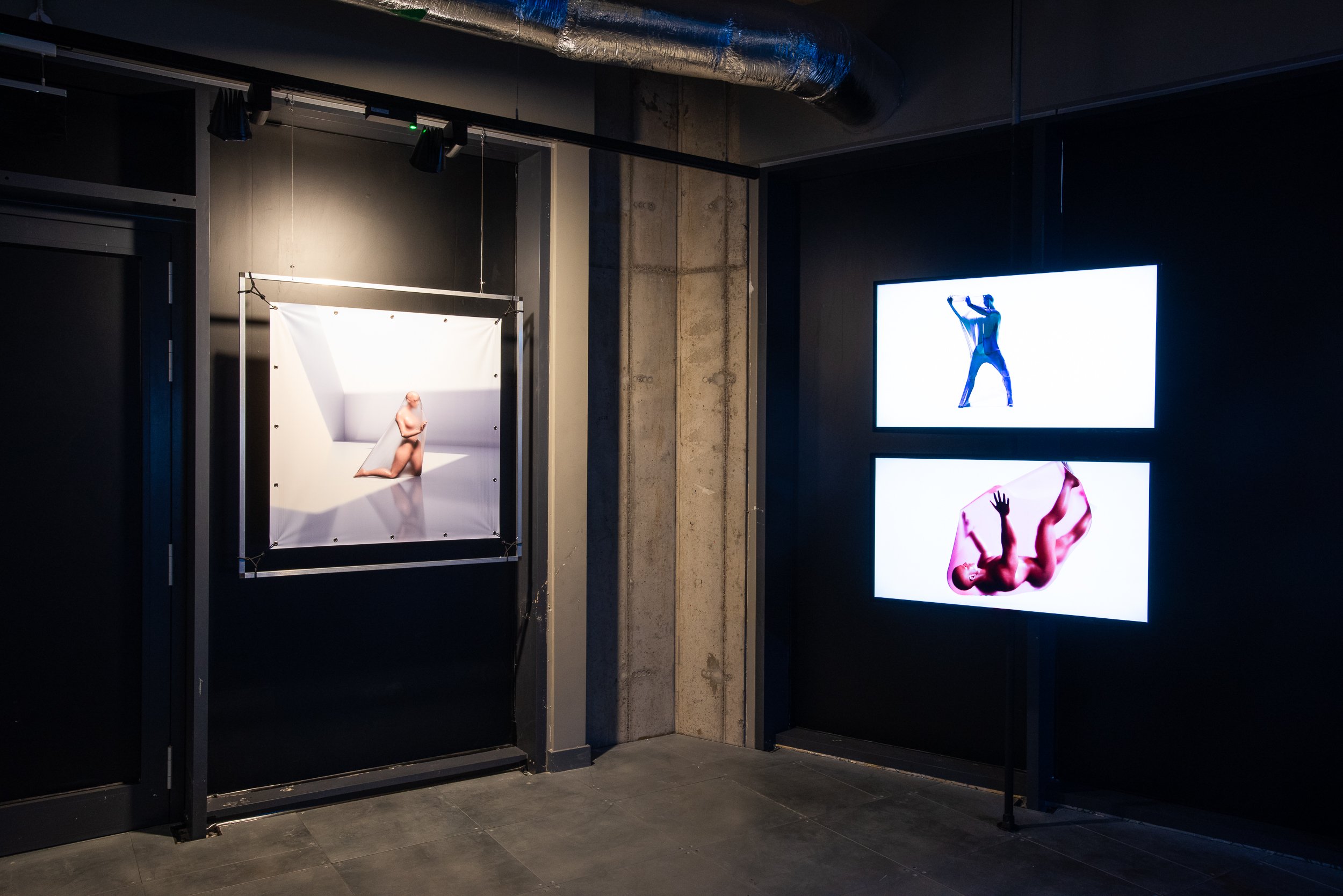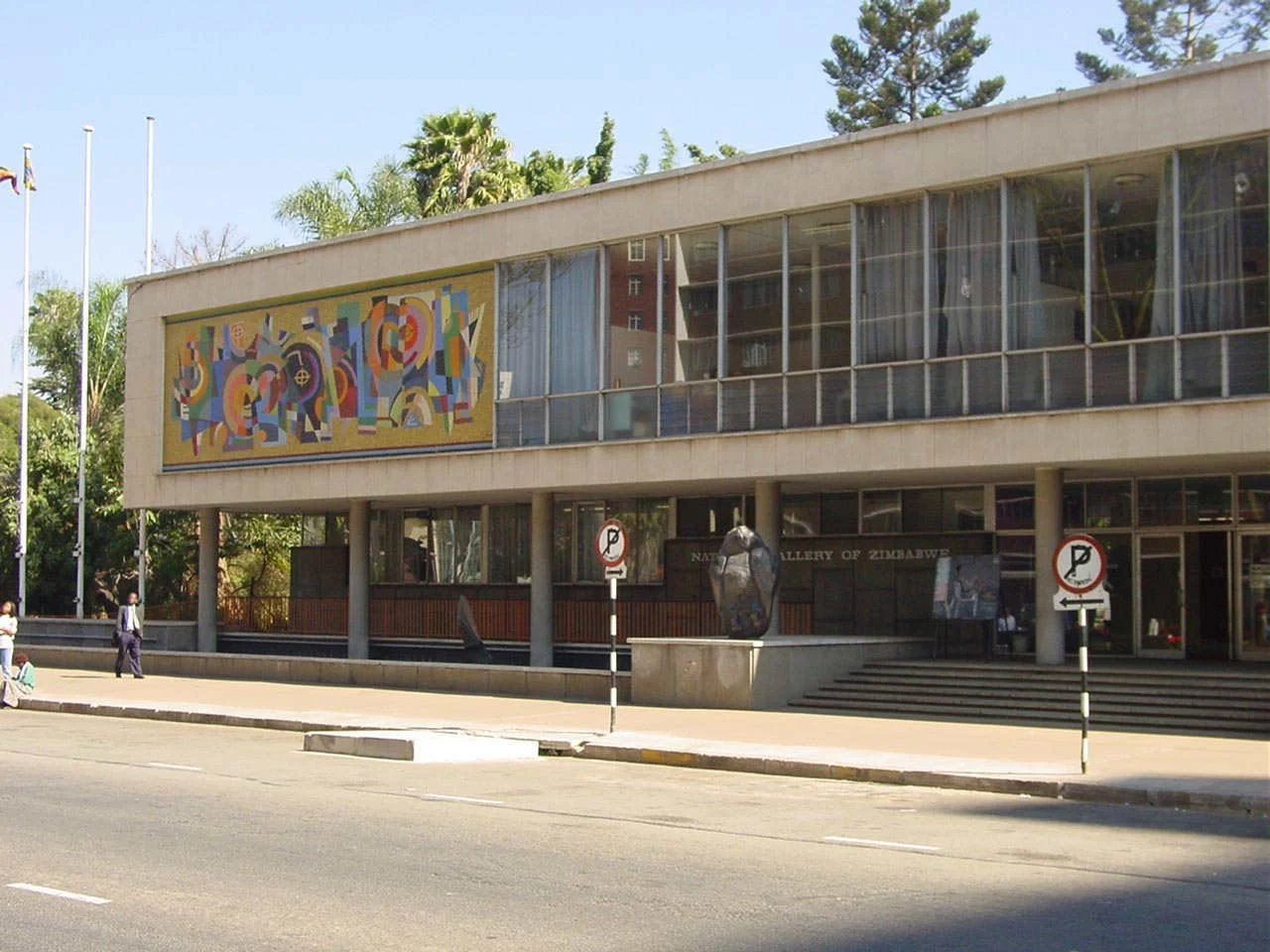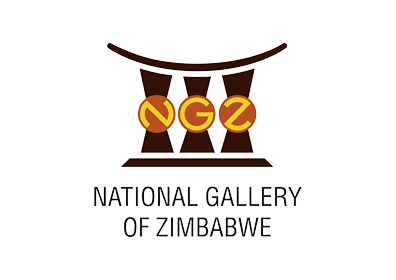Mr Color, Bolatito Aderemi Ibitola, Vincent Bezuidenhout, Scumboy,King Debs, Mbakisi Sibanda, Kumbirai Makumbe, Isaac Kariuki
Part of arebyte 2020/21 programme Systems
Opening Event: Sat 15 Aug 2020, 3 - 6pm
Exhibition runs until 26 Sep 2020
Tue - Sat 1-6 pm
Unveiling plays of power: artists from Africa and UK explore digital realities, challenging conventional notions of control
arebyte Gallery and The National Gallery of Zimbabwe in Bulawayo are pleased to announce POWERPLAY, a group exhibition featuring artists working within digital media, moving image and technology. Co-commissioned by London-based arebyte Gallery and the National Gallery Zimbabwe in Bulawayo, with support from the New Art New Audiences grant from the British Council. The first showing of the exhibition will be presented at arebyte Gallery in London, before travelling to the National Gallery of Zimbabwe in Bulawayo from the 4th of December 2020 to the 30th of May 2021. POWERPLAY will be the first exhibition of digital and new media art at the National Gallery of Zimbabwe in Bulawayo, Harare and Mutare.
POWERPLAY foregrounds the digital arts scene in Africa and presents work by digital artists who are from or based in Nigeria, South Africa, Zimbabwe, and the UK. Discussing the use of technology in creating a sense of identity and place within a digitised world, the artists in the exhibition look at the relationships of power experienced in varying ways. The works address isolation and alienation; societal bias around gender and race; transformation of being; the politics of borders and migration; dark markets of trade; and communities who work outside of mainstream economy. Taking place both online and offline, the multi-sited exhibition format brings to light the fluidity between the virtual and the real - how is power asserted over our decisions and movements, what are the consequences, and how can we think about control differently?
Through newly commissioned and re-imagined work, POWERPLAY explores the nuances of working with digital media in a digitised world. The exhibition looks into the reproduction and commodification of the self, consent and surveillance online and offline, and the exploitation and censorship of data, ideas and behaviours. Through the use of existing infrastructure within the gallery and around the city, as well as the pseudo-advertisement aesthetics seen in the CGI printed works and the Virtual Reality iteration of the exhibition, the artworks proliferate and infiltrate this system to question our agency and power over surveillance and capitalism.
From politicians threatening to use military or economical power as coercion, to the underlying systemic structures of bias built on the oppression of race, gender and sexuality, plays of power are prevalent throughout online and real life interactions by way of social hierarchies and the monopolising of markets.
Plays of power are also widespread in chat rooms, online community forums, and gaming worlds, often with users spreading hate speech with methods of mental manipulation to initiate formations of groups of like-minded people who are hostile to those with differing opinions.
Technology can be used as a tool to demonstrate power - from data collection by black-box algorithms to major tech companies dominating the market - the ways we converse, vocalise our opinions and integrate are becoming increasingly more digitised and therefore unstable. Technology can seem intangible and removed from a sense of personability, however it can also reinforce a sense of place and identity - this is formalised in the exhibition through a reconnection to the physical world by challenging the traditional modes of display, and incorporating screen based works with physical ephemera, alongside a virtual reality version of the exhibition, where the work is stretched beyond its physical or material limits.
Overall, the various creative technologies, software and hardware in the exhibition are used with purpose and intent to address the tensions and consequences of producing work linked to immateriality, the individual and the collective, and the misrepresentation of words and meaning. Technology creates an interrelated mesh of connections in a global network, which is solidified in the artists’ various locations across Africa, Europe and America, but is also conceptually linked in the subtleties of each work.
EVENTS PROGRAMME
Opening Party
Sat 15 Aug 2020, 3-6pm
arebyte Gallery, unticketed event
Tactics: Power and Play
Fri 4th Sep, 6-7:30pm
Watch the event recording here
Panel discussion moderated by Kumbirai Makumbe, with Enorê Rodrigues and Danielle Brathwaite-Shirley
Expanding on the fluidity between the real and the virtual, Tactics: Power and Play explores power in relation to the act of playing.
POWERPLAY – Navigating the African Digital Art Space
Fri 25th Mar, 6 - 7:30pm
Watch the event recording here
Panel discussion moderated by Bulawayo Gallery Curator Cliford Zulu and organised by The National Gallery of Zimbabwe
Discussing the use of technology in creating a sense of identity and place within a digitised world, the artists in the exhibition look at the relationships of power experienced in varying ways.
EXHIBITION CREDITS
Curation & Set Design: Rebecca Edwards, Nimrod Vardi with assistance from Edward Martin and Clifford Zulu (NGZ)
Production: Rebecca Edwards, Nimrod Vardi
Virtual Reality iteration: Christopher MacInnes
Video Production: Marc Blazel
Photography: Max Colson
Exhibition Branding: Stelios Ilchouk
Co commissioned by NGZ
READ THE EXHIBITION BOOKLET
Guest written texts: Hyper-Precarity by artist Isaac Kariuki, statements by Butholezwe Kgosi Nyathi and Cliford Zulu
Featured works
-
Niyi Okeowo is an Art Director, based in Lagos, Nigeria. Mr.Color is an ongoing personal expression inspired and influenced by Futurism, Colors, Spaces and themes of isolation and Serenity.
Mr. Color, THE CREATION,2020?
Inspired by the creation story and the creation of Adam, THE CREATION tells the story of the emergence of a new type of android, one with consciousness and sentient feelings. Energy particles are formed from shared consciousness and the transfer of energies, both bodily and spiritually. The work depicts how the sharing of these energies can accumulate to aid the birth of something new and powerful.
-
Bolatito Aderemi-Ibitola is a trans-disciplinary artist working primarily in time based art, interactivity and performance.
Along with her artistic practice, Aderemi-Ibitola also works as a devised theatre practitioner, performance studies scholar and teaching artist. Born in Lagos, Nigeria, she immigrated to the United States in 2000. She returned to Nigeria in 2014 where she is now living and working.
Bolatito Aderemi-Ibitola earned her Masters in Performances Studies from Tisch School of the Performing Arts, New York University and a Bachelors in Communication Arts with a focus in Television/Film Production and a minor in Political Science from Allegheny College.
Bolatito Aderemi Ibitola, I Was Here, (2016)
Bolatito Aderemi Ibitola uses GIFs as a medium to make connections between migration and desirability of space, playing on the political categorisation of the term "alien" and how the artist feels her own black body is read. This links to Isaac Kariuki who makes comparisons between the sale of (counterfeit) goods on the blackmarket to the displacement of people living outside of the mainstream economy. Here, a connection to life and living is made between online and offline connections, whereby the inside and outside of normative roles are examined through Google Maps and trading on the darkweb.
Vincent Bezuidenhout is a South African born artist whose work spans image-making and investigative documentary practices. His research-based process employs narratives and histories to examine the psychology of power in relation to identity.
He has been awarded grants and fellowships from The National Arts
-
Vincent Bezuidenhout is a South African born artist whose work spans image-making and investigative documentary practices. His research-based process employs narratives and histories to examine the psychology of power in relation to identity.
He has been awarded grants and fellowships from The National Arts Council of South Africa, The Goethe Institut, The Tierney Fellowship, Oppenheimer Memorial Trust, School of Visual Arts - NYC and the National Research Foundation of South Africa. Residencies include the Cité Internationale des Arts, Paris and Photoglobal at the School of Visual Arts in New York City. Bezuidenhout holds a Master’s Degree in Fine Art from the Michaelis School of Fine Art, University of Cape Town, is a published writer, and have lectured widely.
Solo exhibitions include Separate Amenities at Whatiftheworld, Cape Town (2012) and Fail Deadly at Goethe On Main, Johannesburg (2016). Recent group exhibitions includes Imagined Communities, Nationalism & Violence, Rubber Factory, NYC (2017), RE 21: This is Not Here, New York City, U.S.A. (2018), and Addis PhotoFest, Ethiopia, 2018.
Vincent Bezuidenhout, DVDRIP (2010-12)
DVDRIP originated during the rise of illegal file sharing, or ‘pirating’ of movies online. This imperfect process often led to the corruption of digital information which would briefly flash across the screen as abstract geometric patterns, large brightly colored pixels and image artifacts. In the spirit of Harun Farocki’s ‘operative images’ and aesthetically reminiscent of Glitch Art, screen captures were employed in order to create a photographic representation of this phenomena. The video work is a live recording where Bezuidenhout scrubbed through the footage, consciously shifting between certain points in the timeline creating a new narrative with the existing material.
Jsoc_pics consists of images Bezuidenhout appropriated from the Instagram accounts of members of Joint Special Operations Command, USA. The faces of all the soldiers in these photographs have been redacted, before being posted online. These images are imbued with all the characteristics of traditional masculinity, yet the act of self censorship reveals elements of fear and shame. Bezuidenhout created an online shop where the images are used on cheap commodities like mugs and cushions, disarming the photographs by reducing them to the most basic elements of American consumerism.
-
Oliver Hunter Pohorille ( AKA Scum Boy ) is a transgender 3D artist and motion graphic designer in Cape Town, South Africa. His work has been exhibited in various galleries around the world and he has worked with multiple artists of various disciplines. He mainly creates still renders for gallery exhibitions and prints but also has a large body of video art. His art is centered around the human form and its interaction with the world. Oliver uses the principle of 3 dimensional art to warp reality into a world of his own creation.
Scumboy, I Can’t, (2020)
Scumboy’s work shows avatars in various states of entrapment; both physically and mentally. Human emotion is expressed in two ways here through a writhing body unable to comprehend the situation and through positive movement in a body dancing in the acceptance of being powerless. Dance is brought into a different space with King Debs’ work whereby the power of gender and race is interrogated in a ritual performed by a woman figure through the artist's male gaze. In the work, Lerato who is a young Tswana Queen, seen draped in a crimson and black garment, dances to appease the Bantu ancestors. The work opens and challenges the dialogue of the maltreatment of black women, who are instead celebrated in the video in the form of respect and appreciation, and poses the learning/unlearning of the male gaze to the female body.
King Debs is a multimedia artist based in Cape Town, South Afrika. Working primarily in 3D digital art and his self-developed calligraphy, King Debs creates a unique aesthetic to transpose his ideas on identity and Afrikanism. His work deals with the notion of post-humanism within
-
King Debs is a multimedia artist based in Cape Town, South Afrika. Working primarily in 3D digital art and his self-developed calligraphy, King Debs creates a unique aesthetic to transpose his ideas on identity and Afrikanism. His work deals with the notion of post-humanism within an Afrikan context. He is inspired by 'trans-humanist' ideology and the dystopian convergence of man and machine.
King Debs, Ritual Dance 0001
Ritual Dance 0001 is a fully Computer Generated art film. In essence, it is digital augmentation of Afrikan traditions of song and dance as a means of attaining spirituality. The film speaks to the idea of translating primitive, and traditional practices in the new age of information and technology. It is meant to unpack the idea of Afrikan people accessing the liberty to be open, and familiarise themselves with the past, present, and future within the mixed reality space. The artwork is a celebration of identity, the internet, and digital media as tools that can even-out the playing field for the socio-political climate. The film features an Afrikan princess by the name of Swazi. She is clothed in charcoal and crimson regalia, which is meant for healers and shamans. Her face is partially obscured with a silky headpiece cascading down her face. This is meant to shield her view from worldly interferences, but still be able to see some light in her trance-inducing dance. The spinning calligraphy on the back wall, written in yellow /gold paint is meant to further summon the ancestors in the metaphysical realm, to join and guide the healer in prayer. ‘The Lord’s Prayer’ is what a keen observer would read upon deciphering the cryptic glyphs with the calligraphy.
-
Mbakisi Sibanda was born in 1995 in Bulawayo and is a designer by profession, having ventured into commercial design back in 2013 working for advertising and signage companies throughout his career. Sibanda also specialises in creating 3D virtual mockups and visualization.
Mbakisi Sibanda, ISOLATION, (2020)
Mbakisi Sibanda’s work portrays the feeling of being isolated online whilst also being hyper-connected; the contradiction here plays out in the form of a new video work and accompanying print identifying the dark nature of how the internet affects mental and physical health, as well as social disintegration and social anxiety. Also taking at an emotive response to power, Mr. Color’s large banner print tells the story of the creation of a new type of android, one with consciousness and sentient feelings, where energy particles formed from shared consciousness and transfer of energies between bodies. The work questions collectivity, and how positive and powerful energies can combine to create new ways of thinking.
Kumbirai Makumbe believes in the transmutation of the intangible yet experiential. They are enticed by the materiality of digitally generated matter with their work residing at the intersection of art, technology, and
-
Kumbirai Makumbe believes in the transmutation of the intangible yet experiential. They are enticed by the materiality of digitally generated matter with their work residing at the intersection of art, technology, and the ethereal.
They place significant effort into speculative explorations of alternative modes of being and thinking that could negate exclusionary acts and ideologies. Their work continually interrogates the multi-dimensionality of blackness, exclusionary acts, and notions of inclusion, ‘in-betweenness’, ‘caring’ and transcendence.
They are situation-dependent, transform & metamorphose to ceaselessly take on various forms and maneuver through a diverse range of spaces.
Kumbirai Makumbe, It Was A Mix of Things
It Was A Mix of Things follows the journey of a human undergoing the process of ‘Ascension'. Resulting in their transformation into an infomorph, a biological entity or consciousness existing online. This is all in an attempt to formulate effective alternative transcendental politics. One that doesn’t involve the ‘malpractices’ and disheartening utilizations of technology currently evident in our socio-political landscape.
Have we made it apparent that we as humans cannot cognitively conceptualise and actualise a wholly inclusive and sustainable future for ourselves?
It seems we’ve positioned technology and nature as opposites where one is assumed to prevail over the other? What if the merging of technology and nature could be our gate to transcendance as cyborgism has shown us.
How about we consider technology is a means to an end instead of the end.
-
Isaac Kariuki is a visual artist and writer living between London and Nairobi. His work centres on technology, surveillance and internet culture as it relates to the global south and marginalised groups. He holds an MA from Central Saint Martins with a concentration in digital art. He is the founder of Diaspora Drama, a three-part publication exploring creative people of colour with overarching themes of the internet and technology.
He has exhibited at the Tate Modern, Kadist Paris and the Kampala Art Biennale among others as well as holding lectures at the Tate Britain and the Chelsea College of Arts. His writing has appeared in publications including Dazed Magazine, New York Magazine and Garage Magazine, with writings on mysterious internet personas, socialist themes in television and the delights of pirated media.
Isaac Kariuki, Precious Metals / I Come Here Every Day
Falling between the cracks of what’s legal and illegal is the grey market, a loose term for goods bought and sold outside of authorised distribution channels, like a warehouse worker selling off excess inventory of cell phones, handbags, electronics and groceries. For socioeconomic and geopolitical reasons, many people are encircled within the grey market every day, living in illegally rented homes, working unregulated jobs that do not ask for identity cards, or, using a family member’s information instead.
Precious Metals / I Come here Every Day considers this dichotomy as not just arbitrary rules placed upon the less fortunate, but a space that is in a constant state of flux. Displaying wristwatches containing, or, wholly made from metals bought through the dark web, and the grey market, the project displays the meticulous and often volatile nature of watch making as well living in the grey market. Such is the case for an experienced watchmaker, as well as the person selling it off the street.
DESKTOP TOUR
Series hosted by artist Marc Blazel where artists talk through their desktop, key folders, bookmarks, and software they use in their work
TALKING HEADS
Experts within the digital arts sector are invited to review and discuss the works of the exhibiting artist.
About The National Gallery Zimbabwe
National Gallery Zimbabwe in Bulawayo is a unique facility, which holds invigorating and challenging exhibitions. Douslin House where the Gallery is housed is more than 100 years today. Its architectural splendour makes evident the gallery’s own goal of aesthetic appreciation and artistic aim. As custodians of a growing Zimbabwean heritage, we are tasked with the creative and intellectual discipline to select, to nurture and
-
commend outstanding works of visual art, to select and display pivotal works, to generate and improve upon existing talent, to train and develop artistic skills, to educate, to empower, to mediate, and mostly to celebrate. Freed from some of the influences and concerns, which dominate other provinces in Zimbabwe, the unique thrust of the National Gallery in Bulawayo is its desire to dissolve barriers between art and its audience, to establish a consistent dialogue and intimacy. The personality of this gallery is embodied in its transparent windows in the Lower Gallery, which allow passers-by to view current exhibitions while going on about their daily business.

